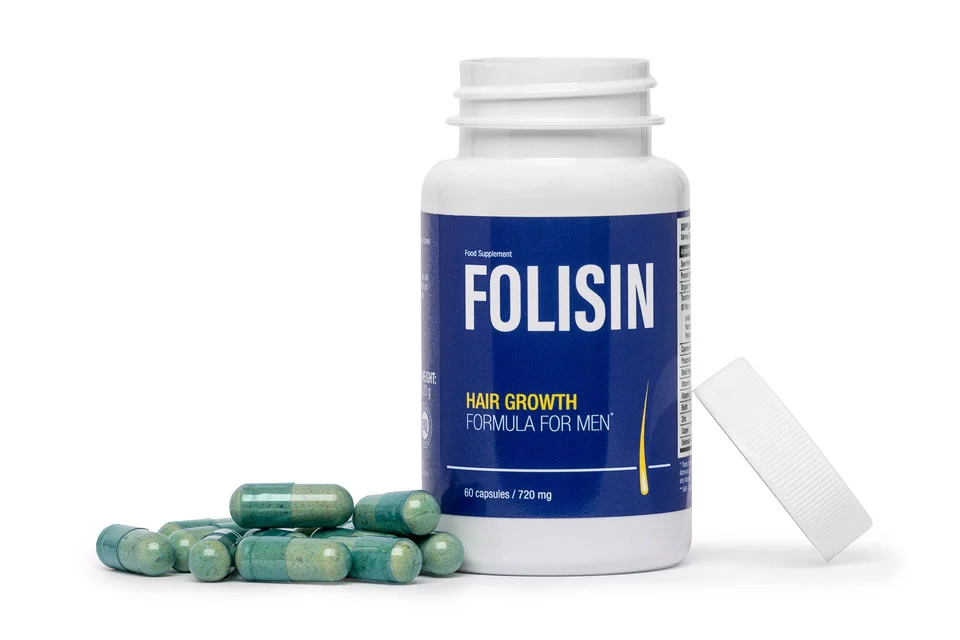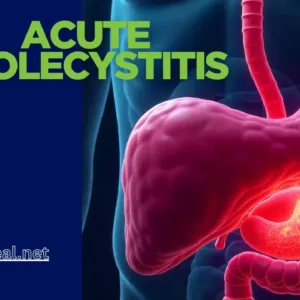Alopecia areata is a type of hair loss that can affect anyone, regardless of age or gender. It is characterized by sudden, patchy loss of hair, which can be distressing and challenging to manage. Approximately 50% of individuals with mild hair loss will see hair regrowth within a year. However, many people may experience multiple episodes of hair loss throughout their lives.
It affects about 1 in 50 people at some point, and it occurs equally in men and women of all races. While the condition can develop at any age, it most commonly first appears before the age of 30.
Although alopecia areata is not life-threatening and does not cause physical pain, it can have significant psychosocial effects. The emotional impact of hair loss can be profound, and patients may also experience secondary symptoms, such as increased irritation of the eyes or nose if eyelash or nasal hair is lost.
What is Alopecia Areata?
Alopecia areata is an autoimmune condition that results in hair loss. The immune system mistakenly targets hair follicles, leading to hair loss on the scalp, face, and other areas of the body. The condition can present in various forms, from small, coin-sized patches of hair loss to more extensive hair loss affecting larger areas.
Alopecia Areata Causes
Alopecia areata is an autoimmune disorder characterized by sudden, patchy hair loss. While the exact cause is not fully understood, several factors are believed to contribute to its development:
1. Autoimmune Response
- Mechanism: The primary theory is that alopecia areata is an autoimmune condition where the immune system mistakenly targets and attacks the hair follicles. This immune response disrupts the normal hair growth cycle, leading to autoimmune Alopecia areata.
- Research: Studies suggest that specific immune cells, called T lymphocytes, may infiltrate hair follicles and contribute to the destruction of hair-producing cells.
2. Genetic Factors
- Family History: There is evidence that genetics play a role in alopecia areata. Individuals with a family history of the condition or other autoimmune disorders may be at higher risk.
- Genetic Markers: Certain genetic markers have been associated with increased susceptibility to alopecia areata, although specific genes involved are still under investigation.
3. Environmental Triggers
- Stress: Physical or emotional stress is often cited as a potential trigger for the onset or exacerbation of alopecia areata. However, while stress can be a contributing factor, it is not considered the primary cause.
- Infections: Some infections, particularly viral infections, may act as triggers for alopecia areata. The relationship between infections and the onset of the condition is still being studied.
- Trauma: Physical trauma or injury to the scalp may also be a trigger in some cases, although this is less common.
4. Hormonal Changes
- Influence: Hormonal changes or imbalances may influence the development or progression of alopecia areata. However, hormones are not considered a primary cause of the condition.
- Research: Some studies suggest that fluctuations in hormone levels, such as those occurring during pregnancy or menopause, could play a role in the onset of alopecia areata.
5. Immune System Dysregulation
- Mechanism: In addition to autoimmune response, general immune system dysregulation may contribute to the development of alopecia areata. This includes an overactive immune system or an imbalance in immune responses.
- Conditions: Individuals with other autoimmune conditions, such as thyroid disorders or vitiligo, may be more likely to develop alopecia, indicating a broader pattern of immune system dysfunction.
6. Genetic and Environmental Interactions
- Complex Interactions: It is likely that a combination of genetic predisposition and environmental factors contribute to the onset of alopecia areata. The interplay between these factors can vary from person to person.
Alopecia Areata Symptoms
Alopecia areata is characterized by specific symptoms related to hair loss. These symptoms can vary in severity and extent. Here’s a detailed look at the common signs and symptoms:
1. Patchy Hair Loss
- Description: The most distinguishing symptom is the sudden loss of hair in small, round patches. These patches can occur on the scalp, eyebrows, eyelashes, beard, or other areas of the body.
- Pattern: The patches can vary in size and may merge to form larger areas of hair loss. The extent of hair loss can range from a few small patches to more extensive areas.
2. Changes in Nail Texture
- Description: Some individuals with alopecia areata may notice changes in the texture of their nails. This can include:
- Pitting: Small, shallow dents or depressions in the surface of the nails.
- Ridges: Horizontal or vertical lines that may appear on the nails.
- Prevalence: Nail changes are not always present and are less common than hair loss.
3. Itching or Tingling Sensation
- Description: Before the onset of hair loss, some people may experience an itching or tingling sensation in the affected areas. This can occur in the scalp or other areas where hair loss is developing.
- Duration: These sensations may precede the visible hair loss or occur at the same time.
4. Sudden Onset
- Description: Alopecia areata often begins abruptly, with hair loss occurring over a short period. This sudden onset can be surprising and distressing for those affected.
- Progression: The condition may progress quickly, with hair loss occurring within weeks or months.
5. Hair Regrowth
- Description: In some cases, hair may begin to regrow in the affected areas, but the new hair may initially be white or gray. Over time, the hair may return to its natural color.
- Pattern: Regrowth can occur spontaneously and may vary from person to person. Hair loss and regrowth can be intermittent.
6. Extensive Hair Loss (Alopecia Totalis/Alopecia Universalis)
- Alopecia Totalis: In some cases, alopecia areata may progress to alopecia totalis, which involves the complete loss of hair on the scalp.
- Alopecia Universalis: A more severe form, alopecia universalis, involves the loss of all body hair, including eyebrows, eyelashes, and body hair.
- Rarity: These more extensive forms of alopecia areata are less common but can occur in some individuals.
7. Emotional and Psychological Impact
- Description: The visible changes in appearance caused by alopecia areata can lead to emotional and psychological effects, including:
- Self-Esteem Issues: Feelings of self-consciousness or embarrassment about appearance.
- Stress and Anxiety: Emotional distress related to the sudden change in appearance and concerns about the future.
- Support: Seeking support from mental health professionals or support groups can help manage the emotional impact of alopecia areata.
Alopecia Areata Diagnosis
It involves a combination of clinical evaluation, medical history, and, in some cases, additional tests. The goal is to confirm the presence of the condition, distinguish it from other types of hair loss, and rule out underlying health issues. Here’s a detailed overview of the diagnostic process:
1. Medical History and Physical Examination
- Medical History: Your healthcare provider will begin by taking a detailed medical history. This includes asking about the onset and progression of hair loss, any family history of hair loss or autoimmune conditions, and any recent stressors or illnesses.
- Physical Examination: A physical examination of the scalp and other affected areas is conducted to assess the pattern and extent of hair loss. The provider will look for characteristic signs of alopecia areata, such as the presence of round, smooth patches of hair loss.
2. Scalp Biopsy
- Procedure: In some cases, a scalp biopsy may be performed. During this procedure, a small sample of scalp skin is removed and examined under a microscope.
- Purpose: A scalp biopsy can help differentiate alopecia areata from other types of hair loss, such as androgenetic alopecia (pattern baldness) or fungal infections. It can also reveal inflammation around hair follicles, which is indicative of alopecia areata.
3. Hair Pull Test
- Procedure: The hair pull test involves gently pulling on a small number of hairs to see how many come out.
- Purpose: This test helps assess the degree of hair loss and may provide additional clues about the type of hair loss. A significant number of hairs coming out with minimal traction can indicate active hair loss.
4. Blood Tests
- Purpose: Blood tests are not always necessary but may be conducted to rule out other underlying conditions or autoimmune disorders that could be contributing to hair loss.
- Common Tests: These may include tests for thyroid function, iron levels, vitamin D levels, and other markers of overall health. In some cases, specific autoimmune markers may be tested if another autoimmune condition is suspected.
5. Dermoscopy
- Procedure: Dermoscopy involves using a special magnifying device called a dermatoscope to examine the scalp and hair follicles more closely.
- Purpose: This non-invasive tool helps visualize hair follicle changes and can provide additional information to support the diagnosis of alopecia areata.
6. Differential Diagnosis
- Purpose: It’s important to distinguish alopecia areata from other causes of hair loss, such as:
- Androgenetic Alopecia: Pattern baldness commonly seen in both men and women.
- Telogen Effluvium: Temporary hair loss often triggered by stress or illness.
- Tinea Capitis: A fungal infection of the scalp that can cause hair loss.
- Traction Alopecia: Hair loss caused by excessive pulling or tension on the hair.
- Evaluation: The healthcare provider will evaluate the characteristics of the hair loss, medical history, and any other symptoms to make an accurate diagnosis.
Psychosocial Impact of Alopecia Areata
Experiencing hair loss can be profoundly upsetting, especially when it occurs suddenly and is challenging to conceal. The psychological and social effects of hair loss can be significant and multifaceted. Individuals struggling with the emotional impact of hair loss should consider seeking support from healthcare providers. These professionals can offer valuable assistance and may suggest working with a therapist, clinical psychologist, or joining a support group. Both individual and group therapy can help individuals adjust to and manage their hair loss, providing coping strategies and advice on cosmetic options.
In addition, there are organizations dedicated to supporting those affected by alopecia areata. The National Alopecia Areata Foundation (www.naaf.org) and Alopecia UK (www.alopecia.org.uk) offer resources and information to help individuals cope with the condition and connect with others who understand their experiences.
Alopecia Areata Treatment
Not everyone with alopecia requires treatment, as some individuals with limited hair loss may experience spontaneous regrowth. For those who seek treatment, several options are available. It is important to note that it cannot be “cured,” and many patients may experience future episodes of hair loss. Here are the main treatment options:
1. Corticosteroids
- Injected Corticosteroids:
- Description: Anti-inflammatory medications injected directly into the affected area to stimulate hair regrowth.
- Process: New hair growth may be noticeable in six to eight weeks; injections are typically repeated every four to six weeks until regrowth is achieved.
- Comfort Measures: A topical anesthetic cream may be used to reduce discomfort during injections.
- Topical Corticosteroids for Alopecia Areata
- Description: Steroid creams, lotions, or shampoos applied to the affected areas.
- Use: Commonly used for children or adults who cannot tolerate injections; applied daily.
- Effectiveness: May be less effective for extensive hair loss compared to injections.
- Oral Corticosteroids:
- Description: Steroid pills taken by mouth, occasionally prescribed for rapid or extensive hair loss.
- Limitations: Long-term use is not recommended due to potential serious side effects; usually prescribed for several weeks only.
2. Oral JAK Inhibitors
- Description: Janus kinase (JAK) inhibitors, such as oral baricitinib and oral ritlecitinib, are immunosuppressive drugs.
- Use: Sometimes prescribed for extensive alopecia areata or cases resistant to other treatments.
3. Topical Immunotherapy
- Description: Involves applying a substance that causes an allergic reaction to the affected area, inducing hair growth through irritation.
- Availability: Not widely available in the United States; consult a dermatologist experienced with this treatment if interested.
Each treatment option has its own set of benefits and limitations, and the choice of therapy should be tailored to the individual’s specific condition and needs. Consulting with a healthcare provider or dermatologist can help determine the most appropriate treatment plan.
Alopecia Areata Regrowth stages
Alopecia areata is an autoimmune disorder that causes hair loss in patches. While the regrowth process can vary widely,here are some general stages that people often experience:
- Active Phase: This is when hair loss occurs. Patches of hair may fall out suddenly, often leaving bald spots on the scalp, eyebrows, or other areas of the body.
- Resting Phase: After the active phase, there’s a period of rest. During this time, no new hair growth occurs, and the bald patches remain unchanged.
- Regrowth Phase: This is when new hair begins to grow in the affected areas. The hair may initially be thin and fine, but it will gradually thicken over time.
- Recovery Phase: As the regrown hair becomes thicker and denser, the affected areas may return to their normal appearance.
Note: The duration of each stage can vary significantly from person to person. Some individuals may experience rapid regrowth, while others may take longer to recover. It’s important to consult with a dermatologist for personalized advice and treatment.
Folisin
Folisin is a new pill for alopecia areata typically presented as a dietary supplement aimed at promoting hair growth and preventing hair loss. It contains a variety of natural ingredients that are believed to support healthy hair, such as:
Common Ingredients in Folisin:
- Saw Palmetto Extract: Often used to block DHT (dihydrotestosterone), a hormone linked to hair loss.
- Biotin: A B-vitamin essential for hair, skin, and nail health.
- Zinc: Important for hair tissue growth and repair.
- Vitamin E: Known for its antioxidant properties that can promote a healthy scalp environment.
- Copper: Helps maintain healthy hair follicles.
- Pumpkin Seed Extract: Sometimes included to block enzymes linked to hair loss.
How Folisin Works:
- DHT Blockage: By blocking DHT, Folisin helps reduce hair thinning and loss in both men and women, particularly in cases of androgenetic alopecia.
- Nutritional Support: It provides nutrients like vitamins and minerals essential for hair strength and growth.
- Improved Circulation: Ingredients like vitamin E help promote better blood circulation to the scalp, supporting hair follicle health.
Benefits:
- Reduced hair loss.
- Enhanced hair growth.
- Improved hair texture and strength.
Possible Side Effects:
While the ingredients are generally natural and well-tolerated, some people may experience allergic reactions or gastrointestinal discomfort. It’s always best to consult a healthcare provider before starting any new supplement.
Cosmetic Approaches
For individuals with extensive alopecia areata, several cosmetic options can help enhance appearance and boost confidence:
- Wigs and Hairpieces: High-quality wigs and hairpieces offer a customizable solution for those who experience significant hair loss. These can be tailored in terms of cut and style to suit individual preferences. While wigs can be an investment, they provide a natural look and can be secured using double-sided tape or suction caps for a comfortable fit.
- Shaving the Scalp: Many men with alopecia choose to shave their scalps. This option is often preferred as wigs and hairpieces may not be as commonly accepted among men. A clean-shaven look can be a practical and stylish choice.
- Temporary Tattooing: For those who have lost eyebrows, temporary tattooing can be a valuable solution. This technique creates a natural-looking appearance that can enhance facial features.
- False Eyelashes: Patients who experience loss of eyelashes can use false eyelashes to restore their appearance. These can be applied easily and provide a fuller look, enhancing the eyes’ overall appeal.
Each of these approaches can be adapted to individual needs and preferences, offering flexibility and personalization in managing alopecia areata
Home remedies for Alopecia Areata
While home remedies might provide some comfort or temporary relief, they are often not enough to fully address alopecia areata. It’s essential to consult with a dermatologist for a proper diagnosis and treatment plan.
However, some people have reported anecdotal benefits from the following:
- Stress management: Alopecia areata can be linked to stress. Techniques like meditation, yoga, or deep breathing can help manage stress.
- Scalp massage: Gentle scalp massage can stimulate blood flow to the area and may promote hair growth.
- Essential oils: Some people believe that essential oils like rosemary, lavender, or peppermint can help stimulate hair follicles. However, it’s important to dilute them with a carrier oil and patch test before applying them to your scalp.
- Aloe vera: Aloe vera has been used topically for various skin conditions, including hair loss. You can apply aloe vera gel directly to your scalp.
Remember: These are just anecdotal reports. It’s crucial to consult with a dermatologist for a personalized treatment plan that addresses the root cause of your alopecia areata.
Conclusion
Alopecia areata is a complex autoimmune condition that results in unpredictable hair loss. Its impact extends beyond physical appearance, affecting emotional well-being and self-esteem. While there is currently no cure, various treatments and cosmetic solutions can help manage the condition and improve quality of life.
Disclaimer: This information provides a general overview of diagnosis, treatment, and medication related to alopecia areata. It is intended to assist in understanding potential options but is not comprehensive. This content is not a substitute for professional medical advice, diagnosis, or treatment. It does not cover all possible conditions, treatments, side effects, or risks specific to individual cases. For personalized medical advice, please consult a healthcare provider who can evaluate your unique circumstances. This information does not endorse or validate any specific treatments or medications.
FAQs,
Is alopecia areata curable ?
No definitive cure exists for alopecia areata. However, many people with the condition experience hair regrowth over time. Treatment options can help manage symptoms and may promote hair growth.
is alopecia areata permanent?
No, alopecia areata is not permanent. While it can be a frustrating and unpredictable condition, many people with alopecia areata experience hair regrowth over time.
Can alopecia areata be cause by stress?
Yes, stress can trigger or worsen alopecia areata. While the exact cause is autoimmune, stress is considered a possible factor that may lead to hair loss or exacerbate the condition.
How do you know if you have alopecia areata?
Alopecia areata is usually identified by sudden, patchy hair loss on the scalp or other areas of the body. Round or oval bald spots may appear, and the skin in these areas is typically smooth. A doctor can confirm the diagnosis through a physical exam and sometimes a biopsy.
Is alopecia areata a genetic disease?
Yes, alopecia areata has a genetic component. It tends to run in families, and individuals with a family history of autoimmune diseases are more likely to develop it. However, environmental factors like stress may also play a role in triggering the condition.
How to stop alopecia areata from spreading?
To stop alopecia areata from spreading, treatments like corticosteroid injections, topical minoxidil, or immunotherapy can be used. Managing stress and consulting a doctor for personalized care are also important.
Things to avoid when you have alopecia areata?
When you have alopecia areata, avoid stress, harsh hair treatments (like chemical dyes and heat styling), tight hairstyles, and harsh hair products that may irritate the scalp.






